University of Kentucky Research and Education Center celebrates 100 years of better pastures
University of Kentucky Research and Education Center celebrates 100 years of better pastures
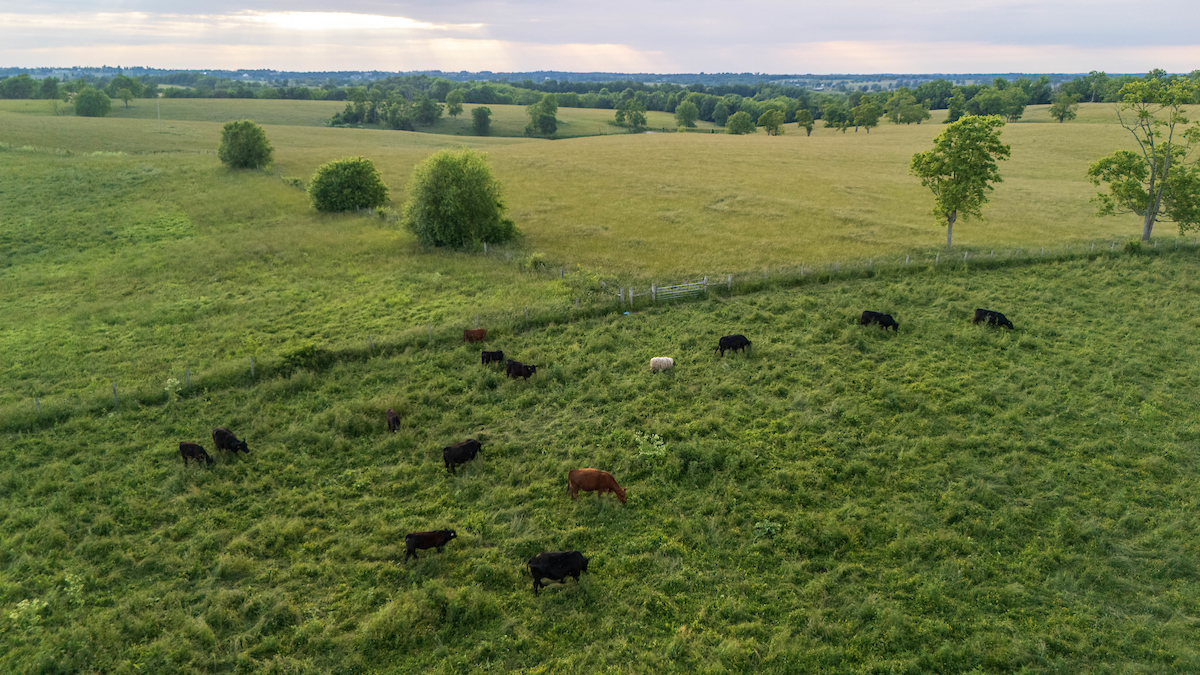

Improving forage crops for higher-producing grazing livestock was a primary goal of the University of Kentucky’s agricultural station in Princeton when it opened in 1925. One hundred years later, the Research and Education Center, as part of the University of Kentucky Martin-Gatton College of Agriculture, Food and Environment and the Kentucky Agricultural Experiment Station, reflects on its many contributions to farmer success.
“Forage crops are an integral part of Kentucky agriculture, underpinning the success of beef, small ruminant and equine farms,” said Chad Lee, director of the Grain and Forage Center of Excellence stationed at the Research and Education Center (UKREC). “Forage research and recommendations from state extension specialists and county agents across the state have helped farmers evaluate and implement new grazing systems to optimize forage utilization, soil improvement and animal performance.”
UKREC faculty and staff, alongside those at the Lexington campus, have conducted a century of extensive research on the production and management of pasture crops and cut forages. Equally important are the educational outreach programs that share newfound knowledge with the farming community. Many of those are held in Princeton to serve Western Kentucky.
Seeding the Way
Rotating forages such as clover and timothy with corn and wheat to improve yields and soil fertility were among the earliest trials at the Princeton substation. Lime and fertilization trials began in 1927 and continued through the mid-1950s.
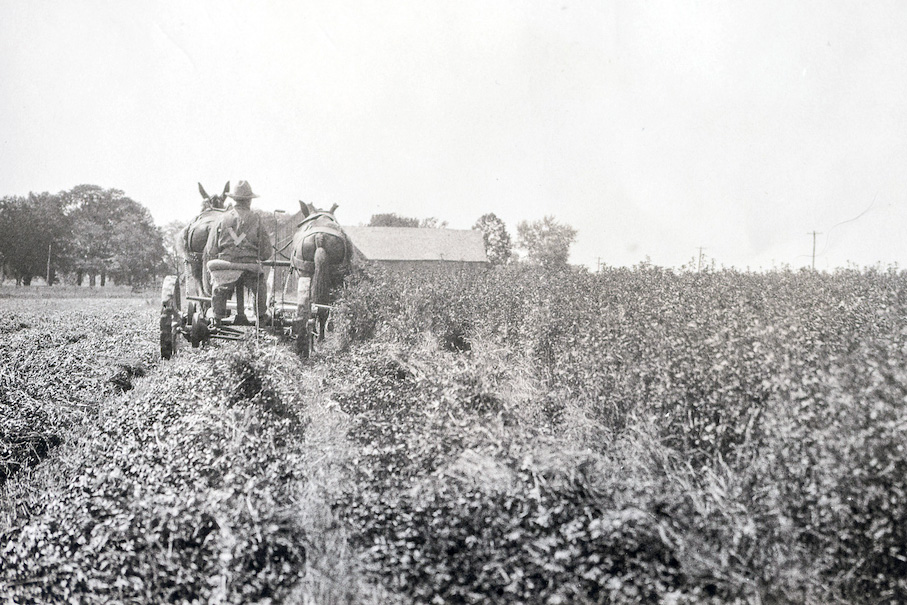
Pasture experimentation also began within the first few years, showcasing the cooperative work with the university’s animal scientists. Beginning in 1929, average yearly gains of steers were recorded to determine recommendations for forage species, soil treatments and animal capacities.
According to early UKREC reports, this 20-year stream of research provided a strong incentive for soil fertility management of Western Kentucky pastures. The study showed that improved pastures could increase average daily gains by three and a half times. As a result of this demonstration alone, hundreds of thousands of acres of poor pastureland were improved.
Sam Lowry, the station’s superintendent from 1925 to 1963, gave many farmer presentations during his tenure and often shared his vision of a thriving livestock industry through the development of better pastures.
“I am not telling you to ‘go to grass,’ but it is my firm belief that if Kentucky farmers, especially those outside the central region, will grow more grass, they will be headed in the direction of happier days,” Lowry said during an extension short course in the 1930s.
The Rise and Improvement of Tall Fescue
As forage research was well underway in Princeton, UK agronomist E.N. Fergus stumbled into forage history on the other side of the state in 1931 when he was asked to judge a sorghum syrup show. Invited to also visit the Suiter Farm in Menifee County during this trip, Fergus observed “an excellent stand of grass on a steep hillside.”
According to Garry Lacefield, former UKREC Extension forage specialist, this was the most crucial farm visit in the history of Kentucky agriculture. Fergus identified the grass as a tall fescue and returned with a few pounds of seed for testing.
UKREC was instrumental in sharing this discovery. It was first seeded in research trials at Princeton in 1932, tested for many years, and then released as “Kentucky 31” tall fescue in 1942. By the 1950s, Kentucky 31 tall fescue had become the most widely grown cool-season grass due to its adaptability and strong performance under pasture conditions.
“It fit into Kentucky,” said Lacefield, who worked at UKREC for his 41-year career, from 1974 to 2015. “It was tough. It would grow anywhere. It started to grow early and would grow late in the season. Farmers really liked it because it was such a good grass, and they could all grow it.”
Unfortunately, it also had its disadvantages. Farmers and researchers observed problems in cattle that grazed in Kentucky 31 pastures, including reduced weight gain, heat stress and hoof problems. This condition, eventually called fescue toxicosis, is caused by a fungus within the plant’s cells, or endophyte. It can also affect sheep and cattle.
Once the endophyte was identified, a collaborative effort at UKREC in the 1970s between Lacefield, Extension agronomist and soils specialist Monroe Rasnake, and Extension animal scientist Roy Burris produced effective strategies to help cattle producers reduce their livestock's exposure. The practices they developed for managing endophyte-infected pastures are still recommended today.
UK researchers also looked to remove the endophyte from the plant entirely. By 1982, they developed an endophyte-free variety called Johnstone. Without the endophyte, however, the resulting fescue lost much of the hardiness that had made it a popular pasture forage. With fescue toxicosis still taking a heavy financial toll on Kentucky's beef industry, Lacefield knew they needed a variety with an endophyte that would bolster the plant's resilience without being problematic for livestock—a nearly impossible pipe dream.
A laboratory in New Zealand eventually discovered a novel endophyte, marketed as Max Q, in 1997, and new fescue varieties were developed. UK plant breeder Tim Phillips developed a Kentucky-born, endophyte-free tall fescue using the Max Q endophyte in the early 2000s and tested it for 12 years. Lacefield Max Q II®, marketed by Pennington Seed Company, was released by the University of Kentucky in 2018. Phillips named the variety for Lacefield upon his retirement to honor his numerous contributions to the forage industry and the college.
Advancing Alfalfa
Alfalfa’s high nutritional value and soil health benefits were well known for years. However, its use in Kentucky forage systems was limited before 1974 because proper establishment required intensive management and expertise.
Lacefield and other UK forage specialists saw great potential for Kentucky farmers to expand their alfalfa acreage and improve yields by adopting better management practices, including soil testing, increased lime and fertilizer application, thoughtful variety selection and proper seeding techniques.
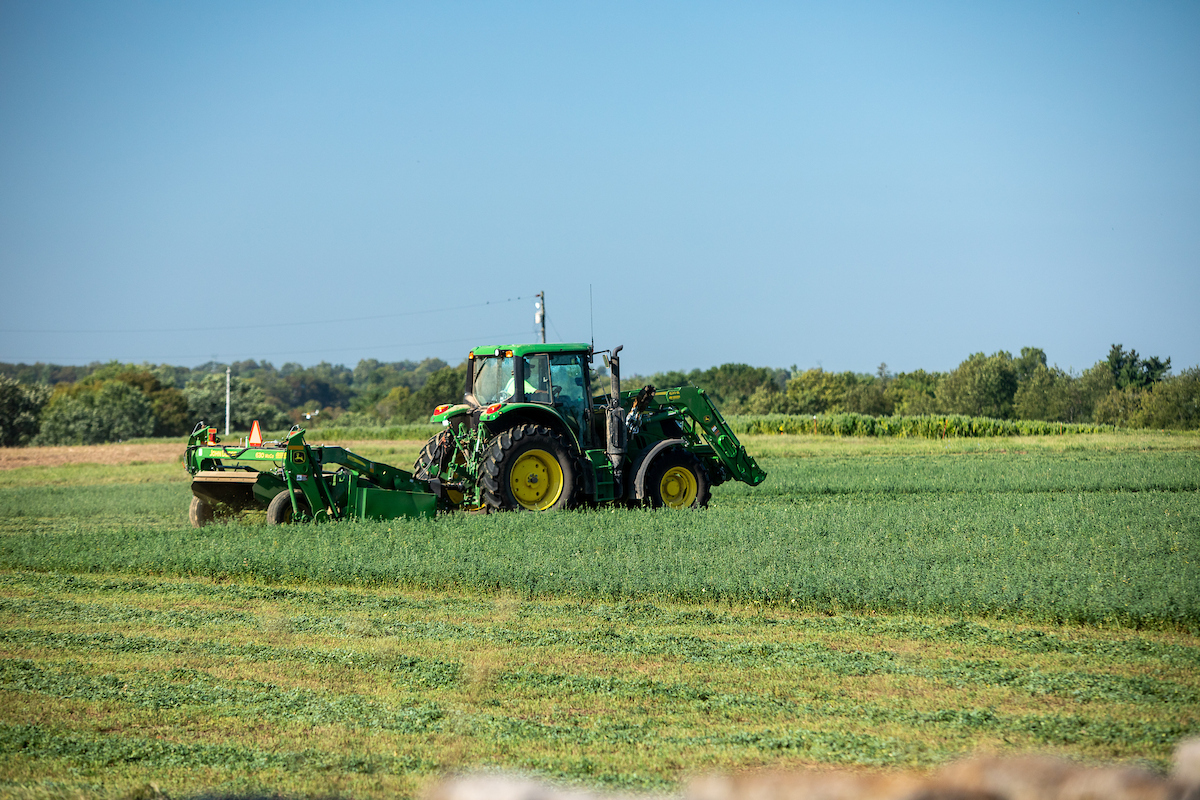
At this time, UK agronomist Tim Taylor and agricultural engineer Ed Smith developed a no-till seed drill to easily integrate legumes into tall fescue fields. Field-testing the machine, which John Deere later purchased, was one of Lacefield’s first assignments when he joined the UKREC team.
In 1980, a visit to an alfalfa farm in Shelby County encouraged him to share more of UKREC’s increasing alfalfa knowledge with area producers. It was a simple meeting at first, but in 1981, the first Kentucky Alfalfa Conference was held in both Shelby County and Princeton, and the annual event has continued at rotating locations across the state since. Lacefield gave a “50 Years of Alfalfa Production in Kentucky” presentation at the 2024 conference.
A Closer Look at Red Clover
The importance of clover, another nitrogen-fixing legume, was well known to UKREC’s early agronomists and grazers. The earliest trials at Princeton included clover varieties, but red clover did not always perform as well as others. Fergus worked with many agronomists to improve red clover adaptability to Kentucky conditions.
Norman Taylor, a UK agronomist from 1953 to 2001, reported that Kenland was the first red clover variety developed and released by the university in 1947.
“The Kenland variety proved to be very well adapted and became the most widely used red clover variety in the United States,” he wrote in 2008.
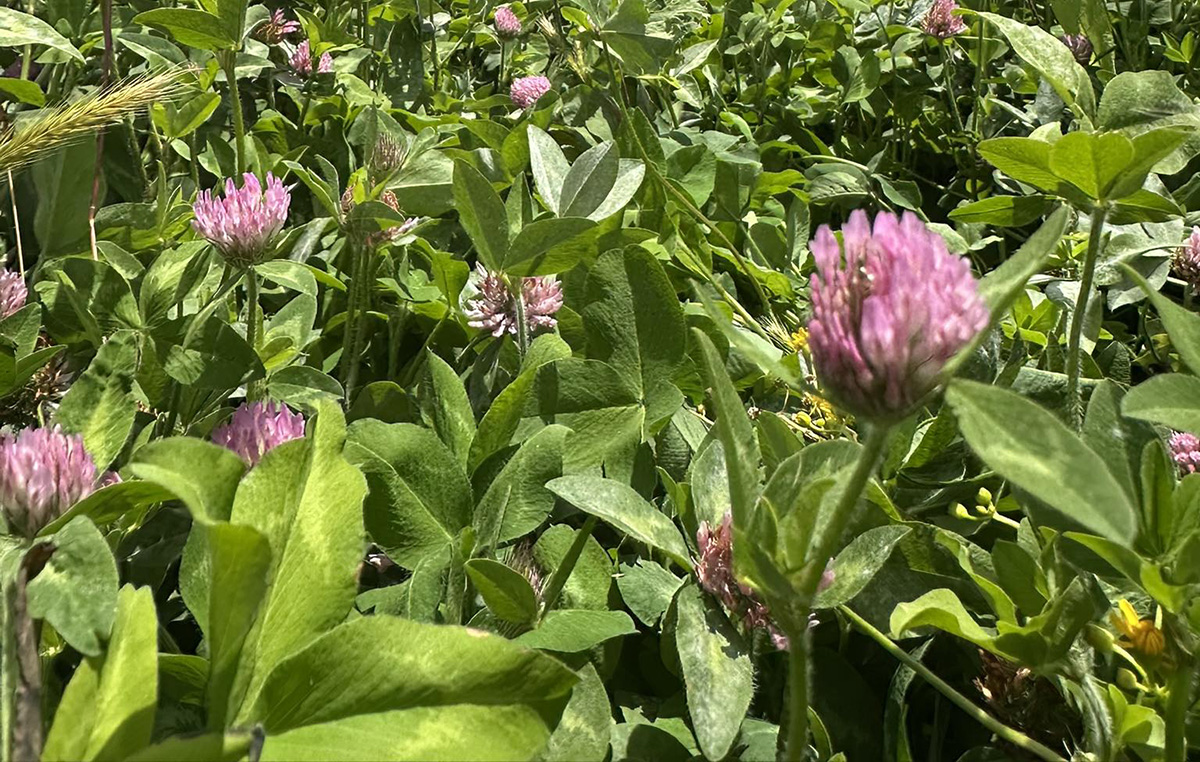
UKREC’s current Extension forage specialist, Chris Teutsch, who arrived in Princeton in 2017, said Kenland is still seeded yearly, due to its hardiness. Its ability to reduce symptoms of fescue toxicosis makes it a perfect pasture companion to Kentucky 31.
“Red clover has been known to dilute the effects of the tall fescue endophyte, but it is now known to reverse it,” he said, referring to the high levels of vascular-widening isoflavones in the legume.
Teutsch said the center’s research on red clover continues today, as researchers look to upscale production and study the impact of drying temperatures and seeding dates on isoflavone levels. They are also investigating pelletizing red clover for integration into grazing systems.
“Although we tend to focus on major discoveries when talking about research, it is important to realize that those ‘big’ discoveries are a cumulative result of smaller projects that have added to the knowledge base over many years,” Teutsch said.
Next-Level Forage Extension Education and Research
Since his arrival, Teutsch has worked with Lexington-based forage specialist Ray Smith and the entire UK Forage Extension Program to continue and grow UKREC’s legacy of strong programming built by Lacefield, retired forage specialist Jimmy Henning and countless others.
The Master Grazer Program, started in 2006 and now headquartered in Princeton under Teutsch’s leadership, holds grazing and fencing schools, a statewide grazing conference, and the alfalfa and stored forage conference annually.
Kentucky also recently hosted the Heart of America Grazing and Forage Conference, bringing more than 400 people to the three-day event last October. It will return to Kentucky in a few years, when they expect to share new findings.
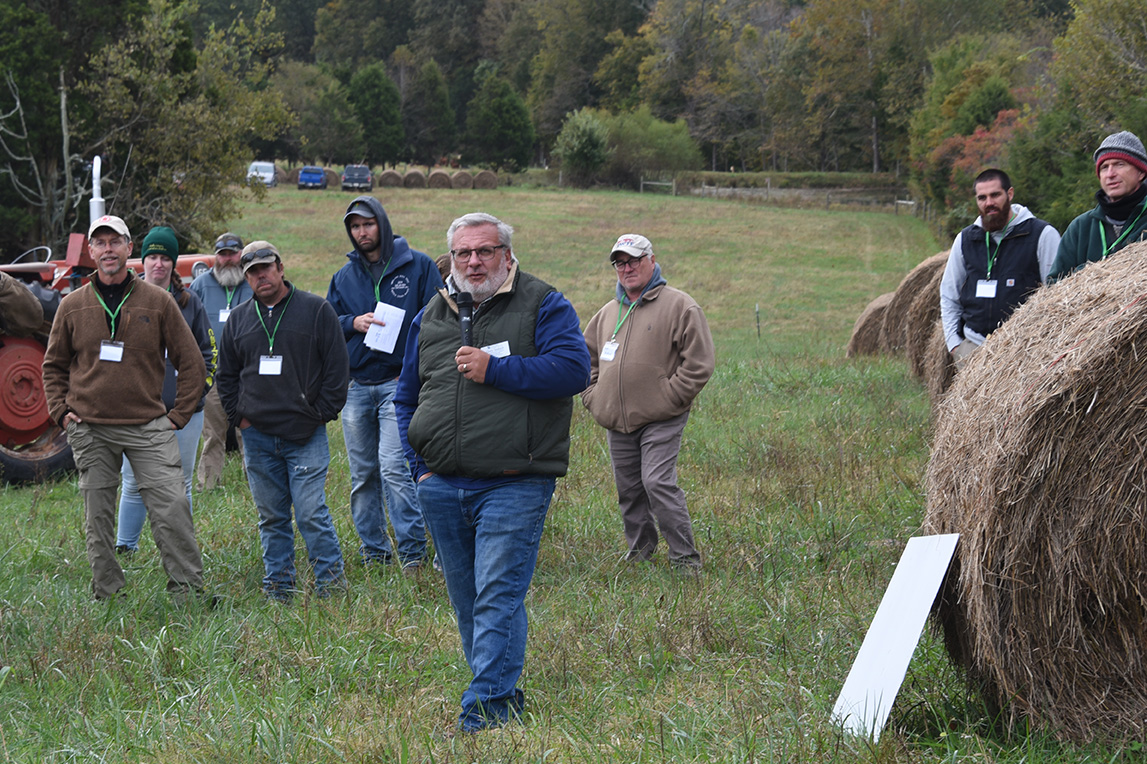
Teutsch said there is still vital work to be done, specifically in climate adaptability.
“We are seeing changes to pastures,” Teutsch said. “How do we manage tall fescue pastures with increasing summer temperatures? We are seeing more species in our pastures, and we need to learn how to manage a diverse mix of cool- and warm-season grasses.”
Lee, who directs the Grain and Forage Center of Excellence at Princeton, also shares a vision for improving production and management practices under varying environmental factors.
“For a century, forage variety, fertilizer and management trials have helped farmers assess the potential yields, quality and adaptability under Kentucky’s unique growing conditions,” Lee said. “The variations in seasonal temperatures and weather patterns provide opportunities for new research and learning what systems will bring economic sustainability to our farmers while improving our resources. Forage and grazing systems will be a part of that.”
For additional information on forage research and Extension programs at UKREC and UK Martin-Gatton CAFE, visit https://forages.ca.uky.edu.
###
Writer: Jennifer Elwell
Contributor: Susan Baniak
The University of Kentucky Research and Education Center (UKREC) at Princeton is proudly celebrating 100 years of advancing agricultural extension, research, education, leadership and service to the Commonwealth. Founded in 1925, UKREC is part of the Martin-Gatton College of Agriculture, Food and Environment, as well as the Kentucky Agricultural Experiment Station and the Kentucky Cooperative Extension Service. A vital part of the Princeton community, UKREC’s impact extends across Kentucky and beyond. To mark this milestone, Martin-Gatton CAFE will host a variety of events and training sessions throughout the year, showcasing UKREC’s legacy of excellence and ongoing commitment to UK’s mission of improving lives through teaching, research and extension.
The Martin-Gatton College of Agriculture, Food and Environment is an Equal Opportunity Organization with respect to education and employment and authorization to provide research, education information and other services only to individuals and institutions that function without regard to economic or social status and will not discriminate on the basis of race, color, ethnic origin, national origin, creed, religion, political belief, sex, sexual orientation, gender identity, gender expression, pregnancy, marital status, genetic information, age, veteran status, physical or mental disability or reprisal or retaliation for prior civil rights activity.
Animal & Food Sciences Extension Plant & Soil Sciences Research UKREC
